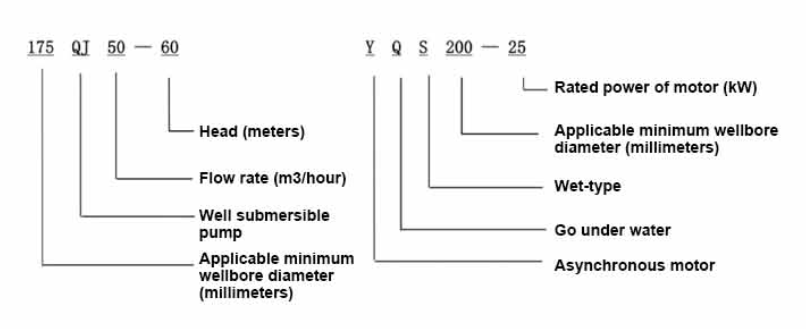Nov . 09, 2024 16:08 Back to list
Repairing and Maintaining Submersible Pumps for Optimal Performance and Longevity
Fixing Submersible Pumps A Comprehensive Guide
Submersible pumps are essential devices used for efficiently pumping water from deep wells, tanks, or underground sources. Unlike standard pumps, submersible pumps operate submerged in the liquid they are pumping. While these machines are built for durability, they may occasionally require repairs. Understanding the common issues and the steps to fix a submersible pump can prolong its life and enhance its performance.
Common Issues with Submersible Pumps
1. Overheating This can occur due to running the pump dry or if the pump is blocked. Overheating may damage the motor and lead to a complete pump failure.
2. Cavitation When the pressure at the pump inlet drops below the vapor pressure of the fluid, cavitation can occur. This results in the formation of vapor bubbles which can cause significant damage to the pump over time.
3. Electrical Failures Electrical issues, including short circuits and wiring problems, can prevent the pump from operating effectively. Corrosion is a common cause of electrical failure.
4. Clogged Impellers Submersible pumps can be clogged by debris, sediment, or other particles in the water. This clogging can reduce efficiency and hinder the pump's functionality.
5. Leaking Seals The mechanical seals are crucial for preventing water from entering the motor housing. Damaged seals can lead to significant water damage and electrical problems.
Steps to Fix a Submersible Pump
1. Turn Off the Power Always start by disconnecting the power supply to the pump. This ensures safety while you diagnose and repair the unit.
fix submersible pump

2. Inspect the Pump Before disassembling anything, conduct a visual inspection. Look for signs of wear and tear, leaks, and corroded electrical connections. Use a multimeter to check the electrical components for continuity.
3. Clear Clogs If clogs are suspected, remove the pump from the well or the water source. Check the impeller and volute for debris and sediment. Cleaning these parts with a soft brush or a cloth can often resolve the issue.
4. Check Mechanical Seals Inspect the mechanical seals for any signs of damage. If they are worn out or leaking, it’s important to replace them as soon as possible. Make sure to purchase seals that are compatible with your specific pump model.
5. Examine the Motor If you suspect that the motor is malfunctioning, you’ll need to open the motor housing. Look for burned or damaged wires and connections. If you find anything amiss, replacing the motor may be necessary.
6. Test for Cavitation If the pump is cavitating, check the inlet conditions. Ensure there is adequate water supply and that the pump is not too far removed from the water source. Adjusting the positioning of the pump or altering the inlet pipe can help.
7. Reassemble the Pump After making the necessary repairs, carefully reassemble the pump. Make sure all bolts are tightened to prevent leaks and that all seals are properly seated.
8. Reconnect and Test Once everything is back in place, reconnect the pump to the power supply and perform a test run. Monitor the pump closely for any unusual sounds or operation issues.
Conclusion
Repairing a submersible pump can seem daunting, but with the right approach and systematic troubleshooting, many common issues can be resolved. Regular maintenance is key to preventing future problems. Always consult the manufacturer’s manual for specific guidance tailored to your pump model. If the problems persist or if you’re unsure about performing repairs yourself, seeking professional assistance is advisable. A well-maintained submersible pump will function efficiently and last longer, ensuring reliable water supply when it's needed most.
-
Submersible Water Pump: The Efficient 'Power Pioneer' of the Underwater World
NewsJul.01,2025
-
Submersible Pond Pump: The Hidden Guardian of Water Landscape Ecology
NewsJul.01,2025
-
Stainless Well Pump: A Reliable and Durable Pumping Main Force
NewsJul.01,2025
-
Stainless Steel Submersible Pump: An Efficient and Versatile Tool for Underwater Operations
NewsJul.01,2025
-
Deep Well Submersible Pump: An Efficient 'Sucker' of Groundwater Sources
NewsJul.01,2025
-
Deep Water Well Pump: An Efficient 'Sucker' of Groundwater Sources
NewsJul.01,2025
-
 Submersible Water Pump: The Efficient 'Power Pioneer' of the Underwater WorldIn the field of hydraulic equipment, the Submersible Water Pump has become the core equipment for underwater operations and water resource transportation due to its unique design and excellent performance.Detail
Submersible Water Pump: The Efficient 'Power Pioneer' of the Underwater WorldIn the field of hydraulic equipment, the Submersible Water Pump has become the core equipment for underwater operations and water resource transportation due to its unique design and excellent performance.Detail -
 Submersible Pond Pump: The Hidden Guardian of Water Landscape EcologyIn courtyard landscapes, ecological ponds, and even small-scale water conservancy projects, there is a silent yet indispensable equipment - the Submersible Pond Pump.Detail
Submersible Pond Pump: The Hidden Guardian of Water Landscape EcologyIn courtyard landscapes, ecological ponds, and even small-scale water conservancy projects, there is a silent yet indispensable equipment - the Submersible Pond Pump.Detail -
 Stainless Well Pump: A Reliable and Durable Pumping Main ForceIn the field of water resource transportation, Stainless Well Pump has become the core equipment for various pumping scenarios with its excellent performance and reliable quality.Detail
Stainless Well Pump: A Reliable and Durable Pumping Main ForceIn the field of water resource transportation, Stainless Well Pump has become the core equipment for various pumping scenarios with its excellent performance and reliable quality.Detail
